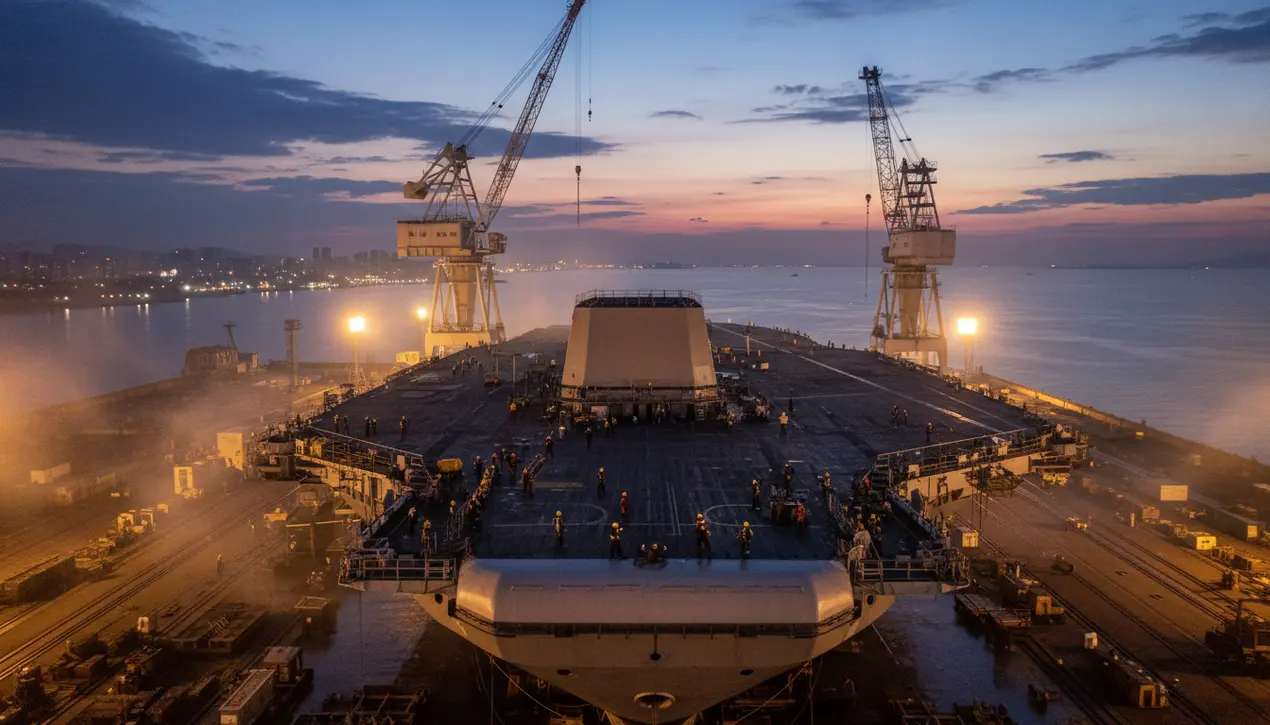
Politicsconflict & defenseMilitary Operations
China Building First Nuclear-Powered Aircraft Carrier
OL
Oliver Scott
2 hours ago7 min read
The grainy satellite images emerging from the Dalian shipyard are more than just pixels on a screen; they are the first tremors of a seismic shift in global naval power dynamics. Just one week after China ceremoniously commissioned its formidable Fujian carrier, a conventionally powered leap forward, new intelligence suggests Beijing is already forging ahead with its most ambitious project yet: the Type 004, believed to be the nation's inaugural nuclear-powered aircraft carrier.This isn't merely an incremental upgrade; it's a declaration of intent, a move that fundamentally alters the strategic calculus of the Indo-Pacific and beyond. The hull structure taking shape, as analyzed by experts at The War Zone and other open-source intelligence hubs, appears to deviate significantly from its predecessors, featuring design elements consistent with the immense internal space required for nuclear reactors.This technological pivot from conventional steam turbines to nuclear propulsion would grant the Type 004 a near-unlimited operational range, freeing it from the cumbersome and vulnerable chain of fleet oilers that currently tethers China's carrier strike groups to its coastline. It would enable persistent, high-tempo operations far into the Indian Ocean, the South Pacific, and along crucial sea lanes of communication, directly challenging the US Navy's long-held monopoly on nuclear-powered carrier dominance.The geopolitical implications are profound. We must consider the scenarios: a permanent Chinese carrier presence off the coast of Africa, a persistent challenge to Indian naval primacy in the Indian Ocean, or a carrier group capable of lingering for months in the South China Sea.This development must be viewed through the lens of China's methodical, long-term strategy to displace the United States as the preeminent Pacific power, a strategy articulated in documents like 'Made in China 2025' and its broader belt and road ambitions. The risks are not merely theoretical; they are operational and immediate.A nuclear-powered Chinese carrier group would complicate US contingency planning for a Taiwan Strait conflict, increase the potential for miscalculation during freedom of navigation operations, and accelerate a regional arms race. Japan is already responding with its own carrier-like 'helicopter destroyers,' Australia is acquiring nuclear-powered submarines through AUKUS, and India continues to develop its indigenous carrier program.The arrival of the Type 004 will force a reassessment of naval doctrine from Tokyo to Canberra to Washington. However, the path is fraught with technical peril.Mastering the compact, safe, and powerful naval reactors required for such a vessel is a monumental engineering challenge, one that took the United States and France decades to refine. A failure here wouldn't just be a budgetary setback; it would be a strategic and reputational disaster for the People's Liberation Army Navy (PLAN).Furthermore, the supporting infrastructure—specialized ports, training for nuclear engineers, and the entire logistics tail for a nuclear fleet—represents a second-order challenge of immense scale. The Dalian shipyard, therefore, is not just building a ship; it is betting the credibility of China's blue-water ambitions on a single, high-risk hull. The world is watching, and the stakes could not be higher.
#China
#aircraft carrier
#nuclear propulsion
#military buildup
#Dalian shipyard
#featured
Stay Informed. Act Smarter.
Get weekly highlights, major headlines, and expert insights — then put your knowledge to work in our live prediction markets.
Comments
Loading comments...
© 2025 Outpoll Service LTD. All rights reserved.